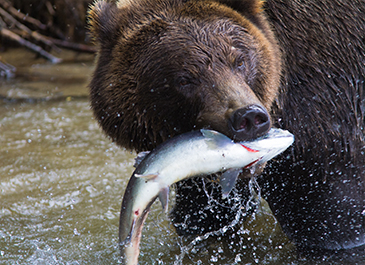Wild Pacific salmon is integral to West Coast history. When experts talk in terms nature coming full circle, our salmon is a perfect example. People aside, salmon feeds wildlife. Wildlife leaves salmon remains in the forest, which fertilizes the soil and trees. Part of the job of plants and trees is to keep the waterways vital to support healthy salmon populations.
In Western Canadian waters, we find 5 major salmon species: coho, sockeye, chinook, chum and pink or spring. Due to varying diets and different growth times, each species has a slightly different texture and taste. The healthy fat content in each salmon species will vary slightly as well. Traditionally, salmon was hot smoked or air dried then eaten. Sometime in the 19th century, canning plants moved in and changed the salmon industry.
In my opinion, baking a salmon whole is the best way to enjoy the true taste. Of course, there are thousands of other ways to cook with salmon. If you have access to fresh ocean-caught salmon, experiment with Scandinavian gravlax. You lightly cure the salmon for two or three days in the fridge with salt, sugar, dill and any other aromatics you’d like. Slice it up and serve it as an appetizer at your next gathering. To avoid heating the house with cooking, you could still keep it simple with your salmon dish by making a modern carpaccio or ceviche.
Salmon chowder is also an option. If chowder isn’t really your thing, try making a bouillabase or other clear broth soup to showcase salmon. Even though it’s a hot soup, bouillabase is light enough to enjoy in the summer time.
A whole fillet can be pan fried, barbecued, poached, baked as is or wrapped in a dough of some sort (puff pastry, phylo, bread dough, etc.). You can even make salmon sliders or oven-roasted or barbecued sausages that use parchment paper as a casing. You can even pickle salmon.
If you’re fortunate enough to have leftovers from your salmon meal (this is a rare occasion in my house), you can turn them into a salmon salad, lasagna or some other pasta dish. No matter how you cook with it, remember that quality is key. That way, you can eat less but eat better.
Sadly, Antonio isn’t hosting any cooking classes this summer. He’ll be too busy creating and eating delicious salmon dishes. You can catch him at this year’s Okanagan Feast of Fields, August 16 at Meadow Vista Honey Wines, Kelowna. To purchase your tickets, visit Choices Kelowna or go online at feastoffields.com.

